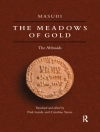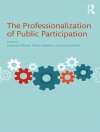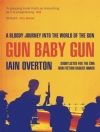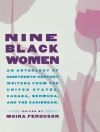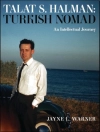Through close readings of poems covering the span of Georg Trakl’s lyric output, this study traces the evolution of his strangely mild and beautiful vision of the end of days.
Like much German-language poetry of the years preceding the First World War, the poems of Georg Trakl (1887-1914) are imbued with a sense of historical crisis, but what sets his work apart is the mildness and restraint of his images of universal disintegration. Trakl typically couched his vision of the end of days in images of migrating birds, abandoned houses, and closing eyelids, making his poetry at once apocalyptic, rustic, and intimate. The argument made in this study is that this vision amounts to a unitary worldview with tightly interwoven affective, ethical, social, historical, and cosmological dimensions. Often termed hermetic and obscure, Trakl’s poems become more accessible when viewed in relation to the evolution of his methods and concerns across different phases, and the idiosyncrasies of his strangely beautiful later works make sense as elements of a sophisticated system of expression committed to ‘truth’ as a transcendental order. Through close readings of poems covering the span of his lyric output, this study traces the evolution of Trakl’s distinctive style and themes while attending closely to biographical and cultural contexts.
Richard Millington is Senior Lecturer in German at Victoria University of Wellington (Aotearoa New Zealand). He is the author of
Snow from Broken Eyes: Cocaine in the Lives and Works of Three Expressionist Poets (2012).
Содержание
INTRODUCTION
CHAPTER 1: TAPPING THE MELODIES WITHIN:
SAMMLUNG 1909
Horror and Inspiration in Vienna
Sammlung 1909
‘Die tote Kirche’
‘Blutschuld’
‘Naturtheater’
‘Von den stillen Tagen’
‘Herbst’
‘Das Grauen’
‘Drei Träume’
‘Nachtlied’
Characteristics of the Phase-One Poems
CHAPTER 2: POETRY THAT SAYS AND MEANS MORE:
GEDICHTE
The Origins of
Gedichte between Salzburg and Innsbruck
Dating
Gedichte: From
Reihungsstil to Free Verse
‘A Bunch of Wildflowers’: Trakl’s Arrangement of
Gedichte
‘Musik im Mirabell’
‘Im Herbst’
‘Die Raben’
‘Heiterer Frühling’
‘Allerseelen’
‘Romanze zur Nacht’
‘Traum des Bösen’
‘Winkel am Wald’
‘Psalm’
‘Verwandlung’
‘In ein altes Stammbuch’
‘Trompeten’
‘Helian’
‘An den Knaben Elis’
Characteristics of the Phase-Two and Early Phase-Three Poems
CHAPTER 3: SONGS FROM THE WRONG END OF HISTORY:
SEBASTIAN IM TRAUM
Between Melancholy and Drunkenness: Composing
Sebastian im Traum
Parallel Arrangements? Röck’s Gedichte and Trakl’s
Sebastian im Traum
‘Untergang’
‘Der Herbst des Einsamen’
‘Afra’
‘Abend in Lans’
‘Sebastian im Traum’
‘Verwandlung des Bösen’
‘Abendländisches Lied’
‘Siebengesang des Todes’
‘Gesang des Abgeschiedenen’
‘Vorhölle’
Characteristics of the Middle and Late Phase-Three Poems
CHAPTER 4: REFLECTIONS OF AN UNHOLY AGE: ‘VERÖFFENTLICHUNGEN IM BRENNER 1914/15’
The Final Months: Departures, Hopes, Catastrophes
‘Das Herz’
‘Die Nacht’
‘Im Osten’
‘Klage’
‘Grodek’
Characteristics of the Phase-Four Poems
AFTERWORD
NOTES
WORKS CITED
INDEX
Об авторе
Richard Millington is Senior Lecturer in German at Victoria University of Wellington (Aotearoa New Zealand). He is the author of Snow from Broken Eyes: Cocaine in the Lives and Works of Three Expressionist Poets (2012).


